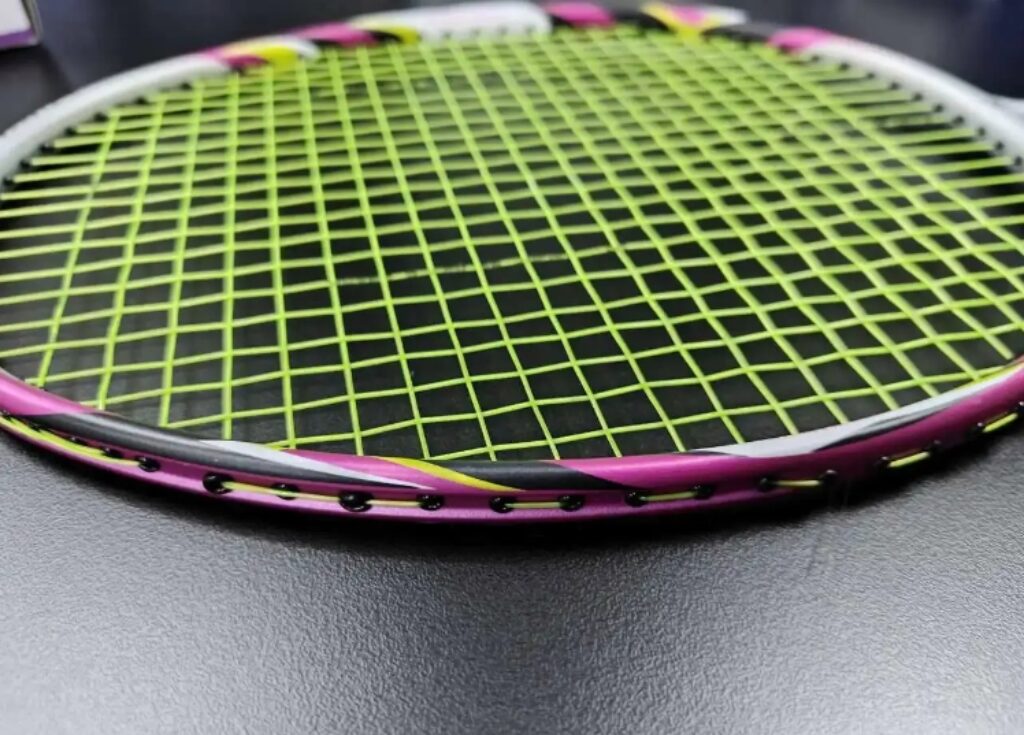The first update of 2024 goes to an unremarkable mid-range racket from the Green Factory.
The ArcSaber series is quite interesting—not only has it had a long lifespan, but it continues to be updated, with many people still willing to buy it today. Although the high-end models get the most attention, after trying the ArcSaber 1000 and realizing that the boundary between mid-range and high-end rackets is becoming increasingly blurred, I’m more inclined to keep testing some mid-range models I haven’t tried yet.
Specifications: 4UG5, bottom cap removed, total weight in use is 86.19g, balance point at 312mm, shaft length of 215mm, low stiffness, box frame, 76-hole string bed, 9–3 o’clock grommets, 24 lbs tension warranty, strung at 25–26 lbs with Gaoshen Steel Armor 5 strings.

Seeing the “FL” suffix, my first thought was that this is more of a women’s racket, even though its full name is Feather Light, meaning lightweight. From its appearance, it does carry some feminine elements, like pink stickers and a white base coat. This isn’t a stereotype; even though the racket’s decorative details aren’t rich, it still looks harmonious overall. However, the Isometric logo placed at the 1 o’clock position on the racket head triggers my OCD a bit.
The racket is a 4U model, and after removing the bottom cap, the head heaviness is quite noticeable. Still, before the actual measurement, I didn’t expect the balance point to be over 310mm. The empty swings feel a bit weighted but reasonable, fitting the identity of an FL model, giving it a sense of agility. It’s worth mentioning that despite being made in Taiwan, the frame still retains the use of nano air springs, which preserves the essence of the ArcSaber series.
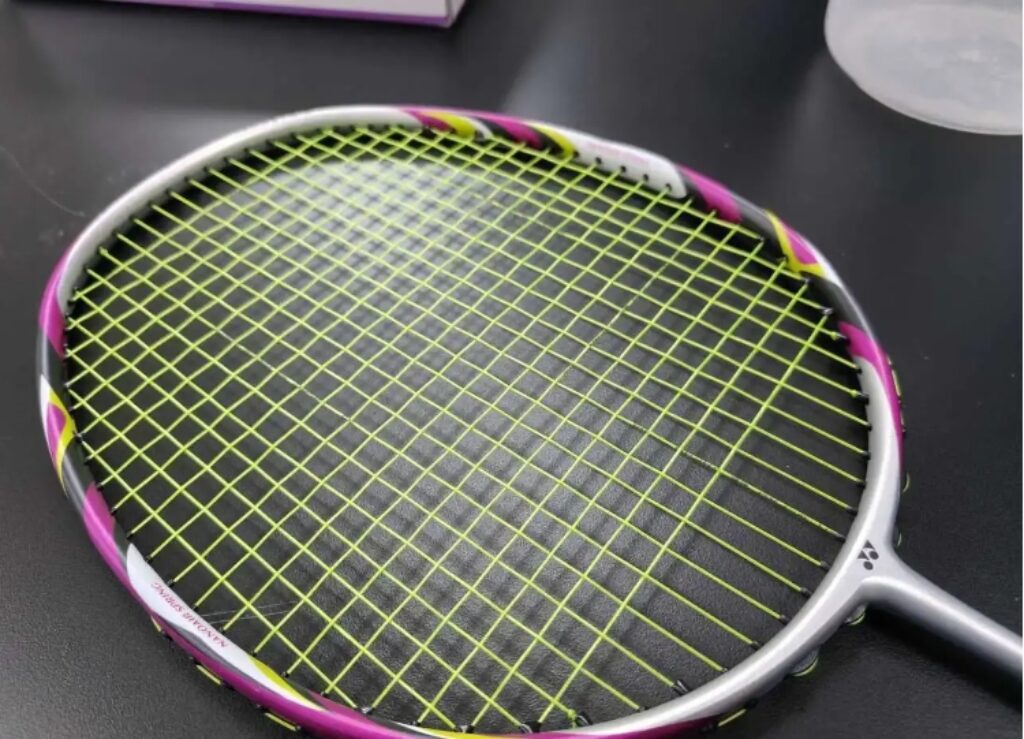
This is a typical “sugar water” racket—not heavy but very easy to generate power, and the shaft is indeed soft, making it easy to produce flex. After flexing, the shaft’s rebound feels about 80% as good as the ArcSaber 7, and the sweet spot feedback is almost identical. In terms of difficulty, there’s virtually none, and the sweet spot is incredibly large, with a very high forgiveness rate.
When trying to hit longer shots with the ArcSaber 6FL, it felt quite normal—no issues with weak shots or lacking control. With some adaptation, it’s possible to control the shuttle’s placement well during clears and drives. Due to the prolonged contact between the string bed and shuttle, there’s a “solid hit” feedback when striking, though the shuttle speed itself isn’t particularly high, and the explosiveness is average. However, since there are no real drawbacks, it’s effortless to use even when fatigued, allowing for relaxed shot execution without any burden.
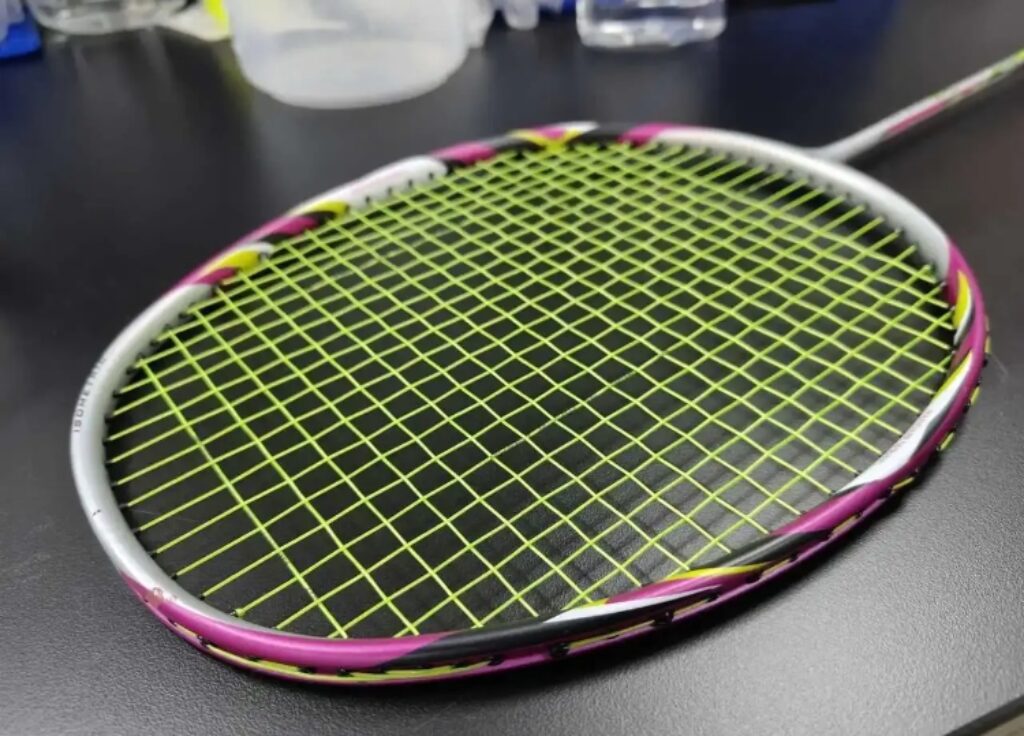
The racket retains the signature shuttle hold of the ArcSaber series, with the string bed wrapping around the shuttle very noticeably. This adds more adjustment flexibility when playing net shots and drops, boosting confidence in shot execution.
The head heaviness of the 6FL provides excellent downward pressure, while its easy-to-generate power and lightweight build give it decent continuity. Even though the quality of the smashes may not be strong enough to finish a rally with one shot from the mid-back court, the continuous output, ensuring each shot travels downward, can still be an effective scoring strategy. This isn’t just due to the quick setup and fast swing speed, but also because of the low physical exertion, which allows for consistent power output.
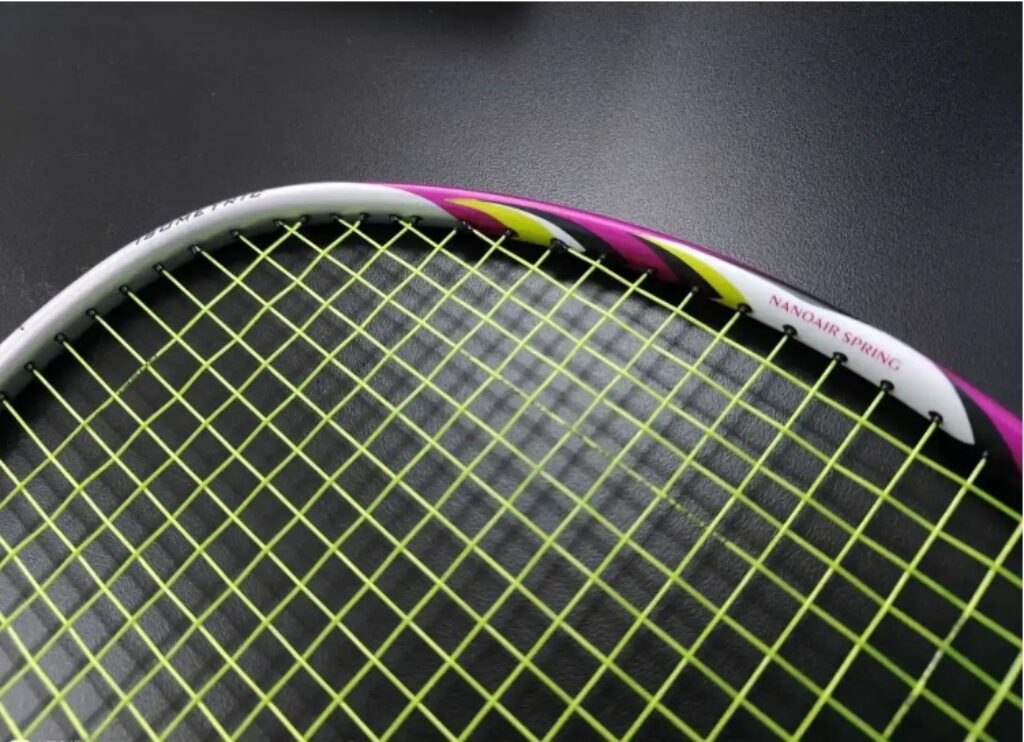
Handling backhand shots with the 6FL is particularly impressive. When in a passive position, such as when rotating to defend against a smash or return drive, where the space to generate power is severely limited, the result is often poor-quality shots or incomplete escapes. However, the ease with which this racket can be driven makes up for this situation—whether it’s soft blocks for transition or power returns to the backcourt, it feels very handy.
At first, I thought that flat exchanges or fast-paced rallies might be a weakness of the 6FL, but in practice, it didn’t make me feel uncomfortable in doubles. While the shots tend to be sticky, this is consistent with the overall tuning of the racket. Despite not having the direct, crisp feel of a quick, power-assisted crosscourt shot, the racket’s more conservative and steady performance in passive or prolonged rallies helps avoid mistakes or being put at a disadvantage.
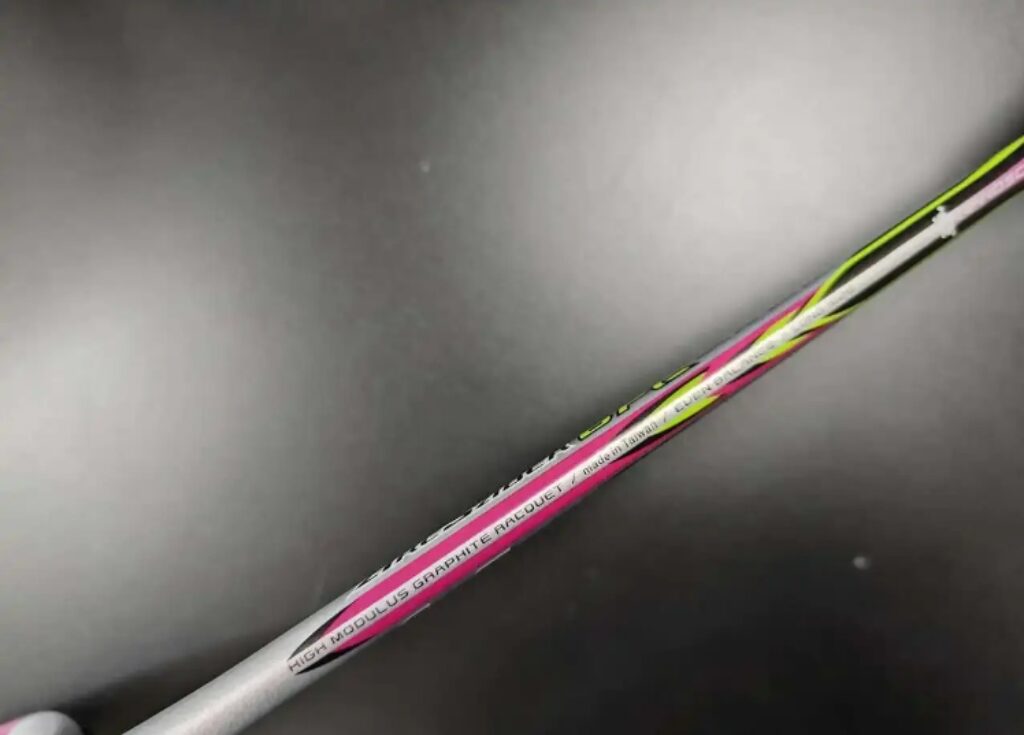
Personally, I feel that the 6FL doesn’t stand out in any particular aspect, but it also doesn’t have any major weaknesses. I believe that if its aesthetics were emphasized more, it could take a good share of the Duora 6 market today.
I almost missed out on this racket at first, not realizing that the ArcSaber 6 and the ArcSaber 6FL are two entirely different models. The latter has a much better feel than the former. However, this was my conclusion before I became familiar with the racket market.
To be honest, the ArcSaber 7 is quite outdated now, and its performance no longer meets modern standards. Even low-end rackets with decent materials can deliver a similar experience. Therefore, it’s no surprise that a Taiwanese-made, older ArcSaber 6FL can receive a satisfying evaluation when compared to it.
